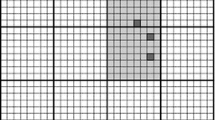Abstract
The effective potential method, used in quantum field theory to study spontaneous symmetry violation, is discussed from the point of view of Bogoliubov’s quasi-averaging procedure. It is shown that the effective potential method is a disguised type of this procedure. The catastrophe theory approach to the study of phase transitions is discussed and the existence of the potentials used in that approach is proved from the statistical point of view. It is shown that in the case of broken symmetry, the nonconvex effective potential is not a Legendre transform of the generating functional for connected Green’s functions. Instead, it is a part of the potential used in catastrophe theory. The relationship between the effective potential and the Legendre transform of the generating functional for connected Green’s functions is given by Maxwell’s rule. A rigorous rule for evaluating quasi-averaged quantities within the framework of the effective potential method is established.
Similar content being viewed by others
References
S. Coleman and E. Weinberg,Phys. Rev. D,7, 1888–1910 (1973).
N. N. Bogoliubov, “Quasi-averages in Statistical Mechanical Problems,” JINR Preprint D-781, Dubna (1961).
K. Huang,Quarks, Leptons, and Gauge Fields, World Scientific, Singapore (1982).
N. N. Bogoliubov and N. N. Bogoliubov, Jr.,Introduction to Quantum Statistical Mechanics, World Scientific, Singapore (1982).
N. N. Bogoliubov, Jr., B. I. Sadovnikov, and A. S. Shumovsky,Mathematical Methods of Statistical Mechanics of Model Systems [in Russian], Nauka, Moscow (1989).
G. Jona-Lasinio,Nuovo Cim.,34, 1790–1795 (1964).
N. N. Bogoliubov (Jr.),A Method for Studying-Model Hamiltonians, Pergamon, New York (1972).
R. Gilmor,Catastrophe Theory for Scientists and Engineers, Wiley, New York-Chichester-Brisbane-Toronto (1981).
V. P. Maslov,Funct. Anal. Appl.,28, 28–41 (1994).
H. Stanley,Introduction to Phase Transitions and Critical Phenomena, Clarendon, Oxford (1971).
S. Norimatsu, K. Yamamoto, and A. Tanaka,Phys. Rev. D,35, 2009–2012 (1987).
L. D. Landau and E. M. Lifshitz,Course of Theoretical Physics, Vol. 5,Statistical Physics. Part 1, Pergamon Press, Oxford (1980).
Author information
Authors and Affiliations
Additional information
Translated from Teoreticheskaya i Matematicheskaya Fizika, Vol. 113, No. 1, pp. 149–161, October, 1997.
Rights and permissions
About this article
Cite this article
Peregoudov, D.V. Effective potentials and Bogoliubov’s quasi-averages. Theor Math Phys 113, 1331–1341 (1997). https://doi.org/10.1007/BF02634020
Received:
Revised:
Issue Date:
DOI: https://doi.org/10.1007/BF02634020



